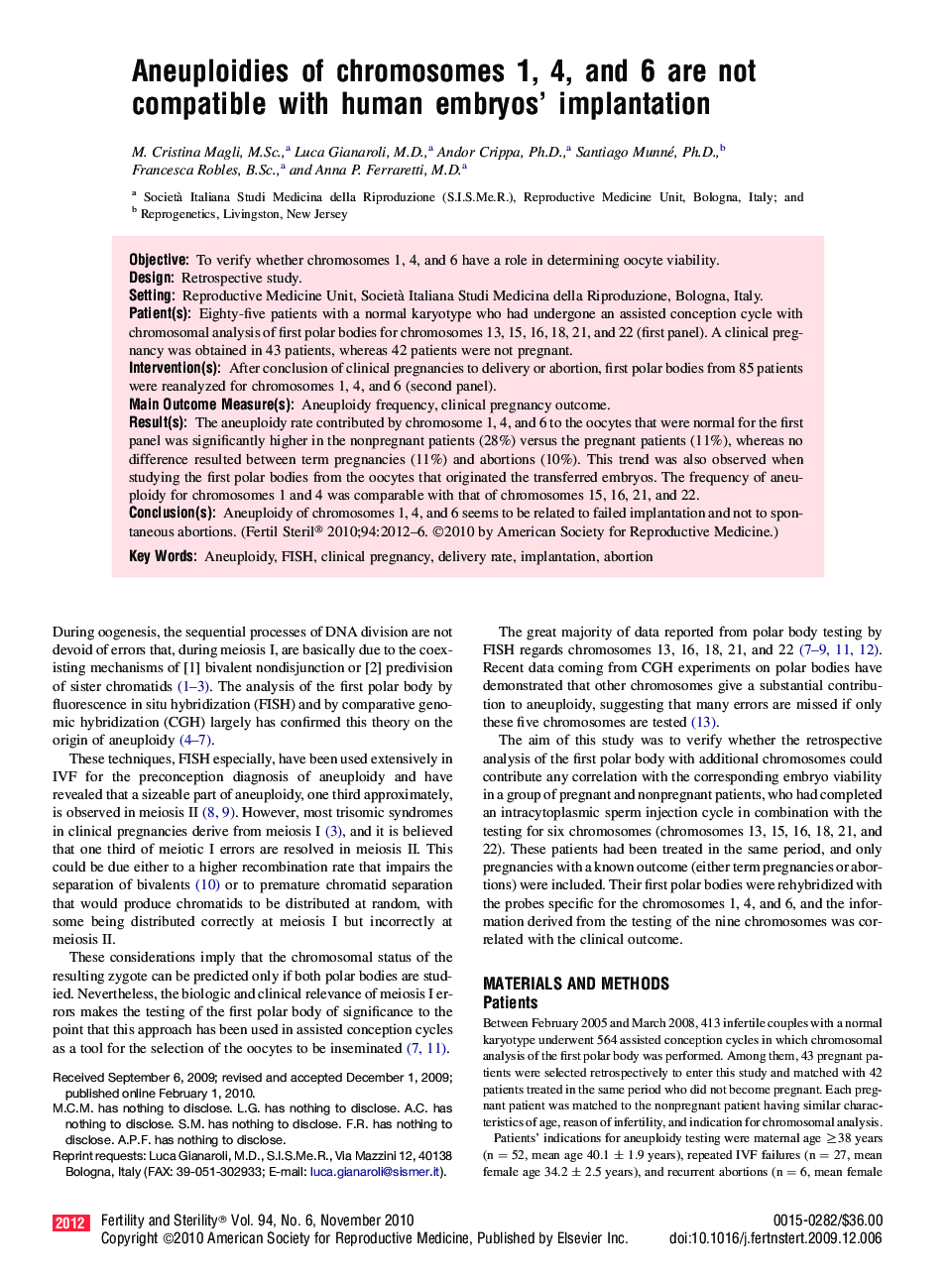| Article ID | Journal | Published Year | Pages | File Type |
|---|---|---|---|---|
| 3932812 | Fertility and Sterility | 2016 | 5 Pages |
ObjectiveTo verify whether chromosomes 1, 4, and 6 have a role in determining oocyte viability.DesignRetrospective study.SettingReproductive Medicine Unit, Società Italiana Studi Medicina della Riproduzione, Bologna, Italy.Patient(s)Eighty-five patients with a normal karyotype who had undergone an assisted conception cycle with chromosomal analysis of first polar bodies for chromosomes 13, 15, 16, 18, 21, and 22 (first panel). A clinical pregnancy was obtained in 43 patients, whereas 42 patients were not pregnant.Intervention(s)After conclusion of clinical pregnancies to delivery or abortion, first polar bodies from 85 patients were reanalyzed for chromosomes 1, 4, and 6 (second panel).Main Outcome Measure(s)Aneuploidy frequency, clinical pregnancy outcome.Result(s)The aneuploidy rate contributed by chromosome 1, 4, and 6 to the oocytes that were normal for the first panel was significantly higher in the nonpregnant patients (28%) versus the pregnant patients (11%), whereas no difference resulted between term pregnancies (11%) and abortions (10%). This trend was also observed when studying the first polar bodies from the oocytes that originated the transferred embryos. The frequency of aneuploidy for chromosomes 1 and 4 was comparable with that of chromosomes 15, 16, 21, and 22.Conclusion(s)Aneuploidy of chromosomes 1, 4, and 6 seems to be related to failed implantation and not to spontaneous abortions.
